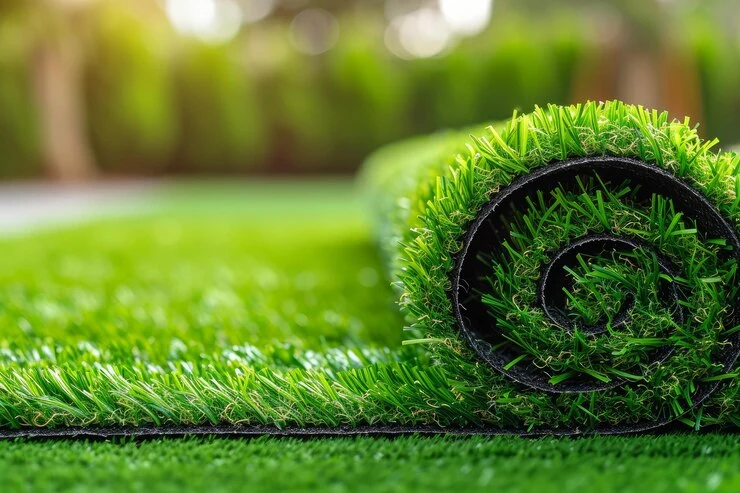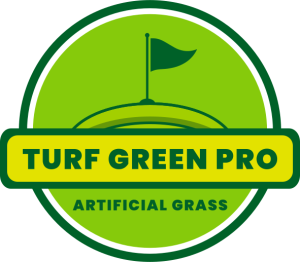Artificial Turf Installation steps | From Preparation to Perfection
Artificial turf installation steps offers a low-maintenance, attractive solution for homeowners and businesses seeking a green lawn year-round. With proper preparation and attention to detail, you can achieve a professional-looking artificial grass install that enhances your outdoor space. In this article, we’ll walk you through the comprehensive steps to install artificial turf, outline the materials you’ll need, and provide tips for prepping your area for the best results.
Prepping for Artificial Turf Installation

Proper preparation is crucial for a successful artificial turf installation. Our process at Turf Green Pro starts with selecting the right site, ensuring suitability, and planning for long-term performance.
Site Selection and Planning
Before diving into the installation process, our team evaluates the area where the artificial turf will be laid. We check for proper drainage to avoid water accumulation, which can damage your turf and create muddy spots. We consider factors such as land slope, proximity to trees, and expected foot traffic. This thorough planning ensures a smooth and durable installation.
Clearing and Leveling the Area
Our first step involves clearing the area of existing grass, roots, rocks, and debris. Using a shovel or sod cutter, we remove 3-4 inches of soil to create a stable base. Next, we level the area to ensure the turf lies evenly, preventing wrinkles and creating a smooth surface.
Installing Proper Drainage
Effective drainage is essential to prevent water buildup under the turf. If the area has poor drainage, we may install a drainage system, such as a French drain, to guide water away from the site. A well-drained base is critical for maintaining the integrity and appearance of your artificial grass over time.
Materials Needed for Artificial Turf Installation
To ensure a successful artificial turf installation, gathering all necessary materials beforehand is crucial. At Turf Green Pro, we use a range of high-quality materials tailored to your specific project needs.
Artificial Turf:
We select premium synthetic grass designed to meet the demands of your installation. Our turf options are evaluated based on pile height, density, and color to achieve the desired aesthetic and functionality. Turf Green Pro’s artificial turf offers exceptional durability and an attractive appearance, ensuring long-lasting satisfaction.
Base Material:
For optimal base preparation, we use a combination of crushed rock and sand. Crushed rock, such as decomposed granite, forms a solid and stable foundation that supports the turf and prevents shifting. Sand is then spread over the rock to provide additional stability and create a smooth, level surface. The base is typically 3-4 inches deep, providing a firm and well-draining foundation.
Weed Barrier Fabric:
To prevent weeds from penetrating through the turf, we lay down weed barrier fabric. This fabric is essential for reducing maintenance efforts and extending the lifespan of your artificial grass by keeping unwanted vegetation at bay.
Seaming Tape and Glue:
When joining sections of turf, we use high-quality seaming tape and glue. This ensures a seamless connection between turf pieces, eliminating gaps and creating a uniform appearance that enhances the overall look and performance of the turf.
Nails or Staples:
To secure the artificial turf firmly in place, we use galvanized nails or staples. These fasteners are strategically placed around the perimeter and throughout the interior to prevent movement and ensure a smooth, stable surface.
Utility Knife:
A sharp utility knife is indispensable for cutting the turf to fit precisely within the installation area. Accurate cuts are crucial for achieving a snug fit and maintaining a professional appearance.
By using these materials, Turf Green Pro ensures a high-quality, durable installation that meets your expectations. Our expertise and attention to detail in selecting and utilizing these materials contribute to the success and longevity of your artificial turf project.
Artificial Turf Installation Steps

With the site prepared and materials ready, our team at Turf Green Pro follows these steps for a professional installation:
Step 1: Base Preparation
We start by spreading crushed rock across the cleared area, using a rake to distribute it evenly. The rock is then compacted using a plate compactor or hand tamper to create a firm base. After compacting, we add a layer of sand and smooth it out to create a perfectly level surface.
Step 2: Lay the Weed Barrier Fabric
Next, we roll out the weed barrier fabric over the entire area. We overlap the edges by a few inches for complete coverage and secure the fabric with nails or staples, focusing on edges and seams.
Step 3: Roll Out and Cut the Turf
We roll out the artificial turf over the prepared base, ensuring it lies flat with the grain running in the same direction. Using a utility knife, we cut the turf to size, carefully trimming around edges, curves, and obstacles for a snug fit.
Step 4: Seaming and Joining Turf Sections
For installations requiring multiple sections, we use seaming tape and glue to join them. The tape is laid along the edges where sections meet, and glue is applied evenly. We press the edges together and allow the glue to set, ensuring a nearly invisible seam.
Step 5: Secure the Turf
We secure the artificial turf using galvanized nails or staples. Starting with the edges, we place nails or staples every 6 inches along the perimeter and then in a grid pattern across the turf. The turf is stretched tightly to avoid wrinkles and create a smooth surface.
Step 6: Add Infill and Brush the Turf
Finally, we add infill to the turf. Infill materials, such as silica sand or rubber, provide weight to the turf, support the grass blades, and aid in drainage. We spread the infill evenly and brush the turf with a stiff-bristled broom to help the grass blades stand upright and distribute the infill.
Final Inspection and Maintenance
After the installation of your artificial turf is complete, Turf Green Pro performs a thorough final inspection to ensure every detail meets our high standards. We check for any wrinkles, loose edges, or uneven areas, making adjustments as necessary to guarantee a seamless and flawless finish. This includes verifying that all sections of the turf are securely fastened and that seams are properly joined. We also ensure that the drainage system is functioning correctly and that the surface is level and smooth.
Regular maintenance of your artificial turf is minimal but essential to keep it looking its best. We recommend occasional brushing with a stiff-bristled broom or power broom to keep the grass blades upright and evenly distribute the infill. Removing debris such as leaves and branches is important to prevent buildup that can affect the turf’s appearance. Periodically rinsing the turf with water helps remove dust and dirt, maintaining its vibrant color. Additionally, check the infill level regularly and top up as needed to ensure proper cushioning and support. Inspect the turf for any signs of damage or wear, and address any issues promptly to prevent further problems. For pet owners, it’s important to clean up pet waste promptly and rinse the area to avoid odors.
By adhering to these maintenance practices, you’ll ensure your artificial turf remains in excellent condition and continues to enhance your outdoor space. Turf Green Pro is dedicated to providing ongoing support and assistance to keep your turf looking pristine. If you have any questions or require further help with maintenance, our team is always here to assist.
Conclusion
Choosing Turf Green Pro for your artificial turf installation guarantees a beautiful, low-maintenance landscape that will enhance your outdoor space for years to come. Our expertise and high-quality materials ensure a durable and attractive installation. Whether you’re transforming a backyard, playground, or putting green, we provide top-notch service tailored to your needs.
With careful planning and expert execution, you’ll enjoy the benefits of a stunning, hassle-free lawn. Contact Turf Green Pro today to get started on your artificial turf project!
FAQs
What Are The Benefits Of Installing Artificial Turf?
Artificial turf offers a low-maintenance alternative to natural grass, providing year-round greenery without the need for watering, mowing, or fertilizing. It’s durable, environmentally friendly, and ideal for areas with high foot traffic.
How Long Does Artificial Turf Last?
With proper installation and maintenance, artificial turf can last 15 to 20 years. The lifespan depends on the quality of the turf, the amount of usage, and environmental conditions.
What Materials Are Needed For Artificial Turf Installation?
Key materials include the artificial turf itself, a crushed rock base, weed barrier fabric, seaming tape and glue, galvanized nails or staples, and infill. You may also need a plate compactor, utility knife, and a stiff-bristled broom.
How Do I Prepare The Ground For Artificial Turf Installation?
Start by clearing the area of grass, roots, and debris. Excavate the soil to create a 3-4 inch base, ensuring proper drainage. Compact the base material (crushed rock) and level it before laying the turf.
Is Drainage An Issue With Artificial Turf?
Proper drainage is crucial to prevent water buildup. A well-prepared base with adequate slope and compacted layers helps ensure water flows away from the turf. In some cases, additional drainage solutions like French drains may be necessary.
How Do I Secure The Artificial Turf?
After laying out the turf and cutting it to fit, use galvanized nails or staples to secure the edges and interior. Anchoring the turf properly prevents it from shifting and ensures a smooth surface.
What Is The Purpose Of Infill In Artificial Turf Installation?
Infill, typically made of silica sand or rubber, is added to the turf to provide stability, support the grass blades, and aid in drainage. It also adds weight to keep the turf in place.
